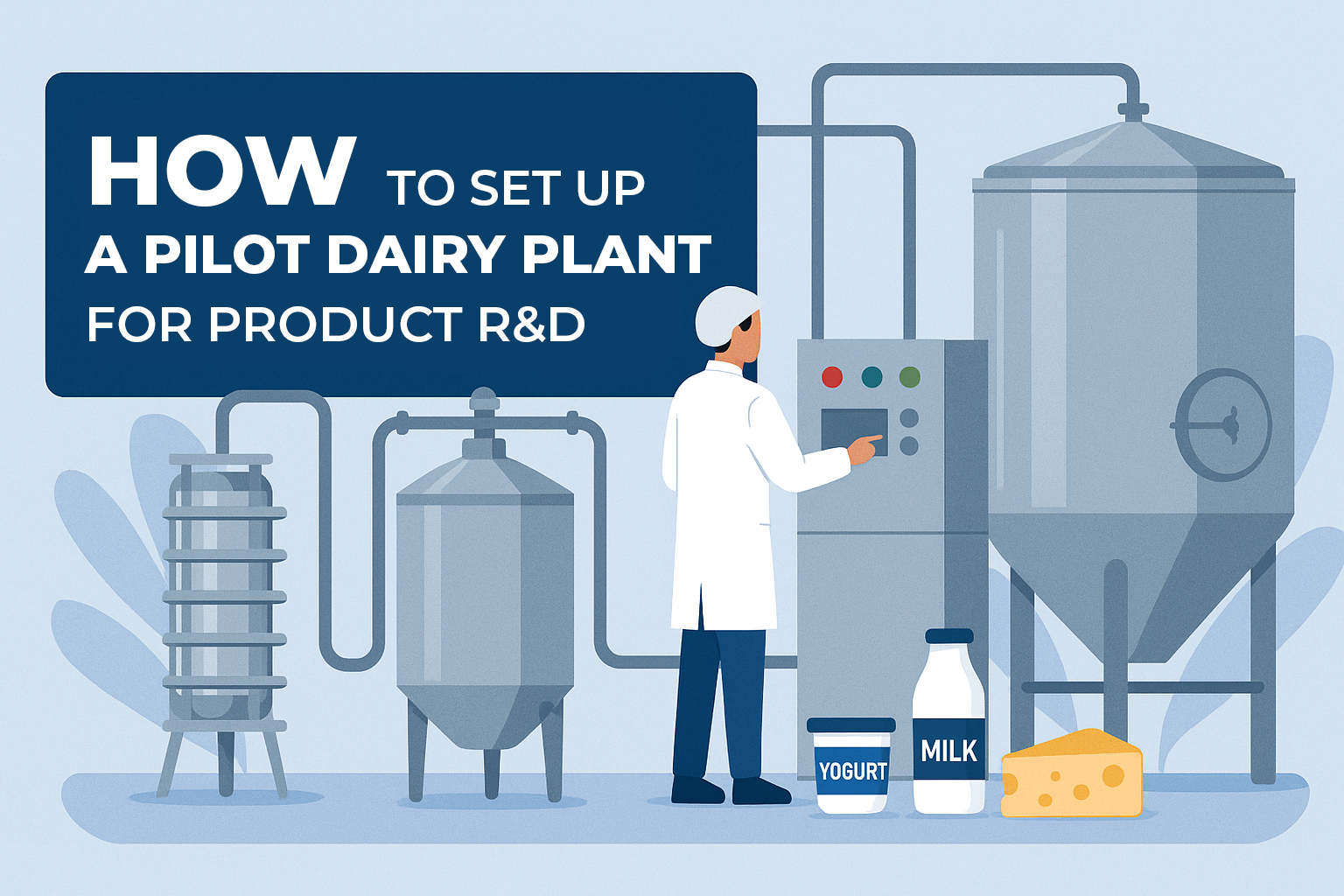In today’s fast-evolving dairy industry, innovation is everything. From probiotic-rich yoghurts to plant-based milk alternatives, the demand for fresh ideas is higher than ever. But how do you test and perfect a new product without investing in full-scale infrastructure? That’s where a pilot dairy plant steps in.
A pilot plant is essentially a miniature version of a milk processing plant. It’s designed to replicate real-world dairy production on a smaller scale—ideal for R&D teams, food startups, or academic labs aiming to develop new dairy products, trial alternative ingredients, or fine-tune processing parameters.
The Value of Starting Small
Big ideas often begin in small batches. Whether you're creating the next hit flavoured milk or experimenting with heat-stable proteins, having a pilot setup lets you explore without the high risks or wastage of a commercial line.
Pilot plants allow:
-
Recipe development and prototyping for everything from cheese and cream to yoghurt and desserts.
-
Process testing, such as evaluating different pasteurization or homogenization conditions.
-
Shelf-life analysis and packaging trials under real processing conditions.
-
Staff training and equipment validation in a safe, controlled setting.
This level of flexibility makes it easier to make data-driven decisions and adapt quickly to consumer trends.
What Goes into a Pilot Dairy Setup?
A well-equipped pilot milk processing plant typically includes the core components of a full facility—just downsized for lab or small-batch use. Some of the key equipment includes:
-
Milk Storage Tanks: To safely store raw or treated milk.
-
Pasteurizer or UHT unit: Critical for food safety and shelf stability.
-
Homogenizer: Ensures a consistent texture and stable emulsion.
-
Batch Vats & Mixing Units: Useful for heating, blending, or culturing.
-
Mini filling & sealing systems: To package samples in retail-ready form.
Optional systems like a CIP system (Clean-In-Place) or SCADA-based controls make the plant even more efficient and hygienic—especially for repeated trials and multiple SKUs.
Practical Tips Before You Start
Before setting up your pilot facility, ask yourself:
-
What types of dairy products will you test?
-
How many litres per batch will you need?
-
Will you need to switch between dairy and non-dairy formulations (like oat or almond milk)?
-
What utilities—steam, chilled water, compressed air—are required?
-
Do you need data logging or automation for regulatory compliance?
Taking the time to plan these details ensures your pilot setup is not only effective but scalable when you're ready to go full-scale.
Why Choose Goma?
At Goma, we don’t just supply equipment—we build pilot systems that empower innovation. Our pilot dairy plants are designed for real-world accuracy, process flexibility, and hygiene. Whether you're in a food lab, an R&D centre, or a startup kitchen, we’ll help you simulate production line performance without the scale-up stress.
Our clients use our plants to:
-
Develop and test high-value products
-
Streamline the path to commercial production
-
Train teams on process control and quality standards
From homogeniser to pasteurizer, we tailor your system to your exact needs.
The Bottom Line
In the race to develop fresh, safe, and delicious dairy products, a pilot plant is no longer optional—it’s a smart starting point. It helps you stay ahead in a competitive market by giving you the tools to test, learn, and perfect before you scale.
Looking to innovate with confidence? Get in touch with Goma to explore how our pilot dairy solutions can support your next breakthrough.


